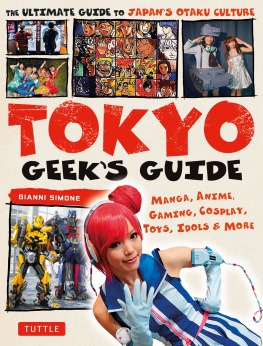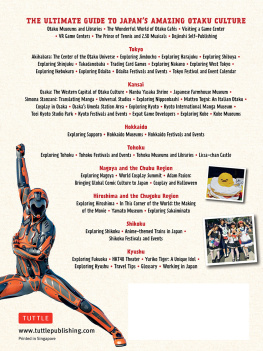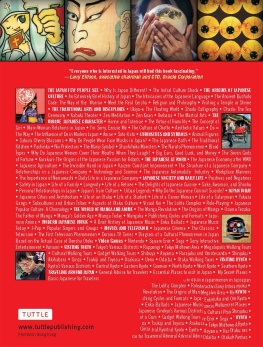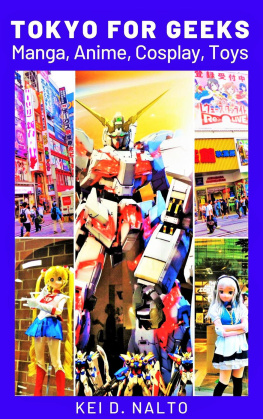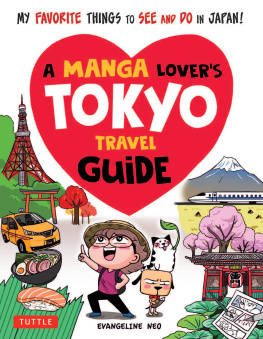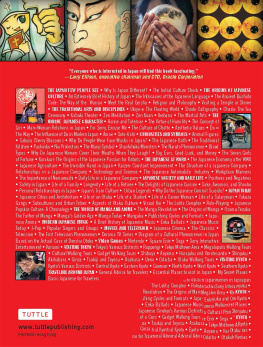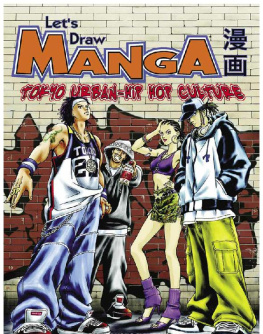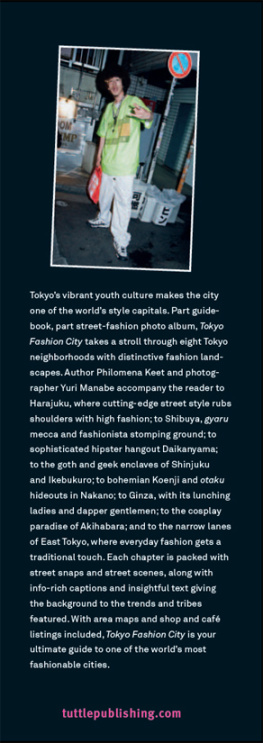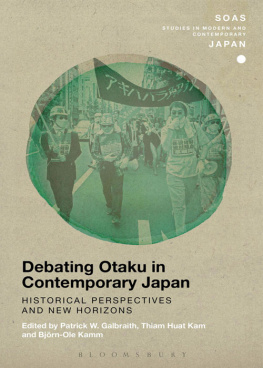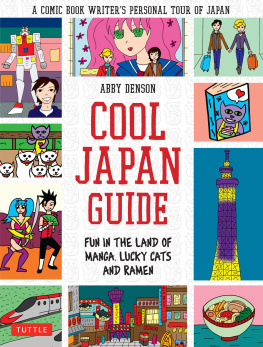ABOUT TUTTLE:
BOOKS TO SPAN THE EAST AND WEST
Our core mission at Tuttle Publishing is to create books which bring people together one page at a time. Tuttle was founded in 1832 in the small New England town of Rutland, Vermont (USA). Our fundamental values remain as strong today as they were thento publish best-in-class books informing the English-speaking world about the countries and peoples of Asia. The world has become a smaller place today and Asias economic, cultural and political influence has expanded, yet the need for meaningful dialogue and information about this diverse region has never been greater. Since 1948, Tuttle has been a leader in publishing books on the cultures, arts, cuisines, languages and literatures of Asia. Our authors and photographers have won numerous awards and Tuttle has published thousands of books on subjects ranging from martial arts to paper crafts. We welcome you to explore the wealth of information available on Asia at www.tuttlepublishing.com.
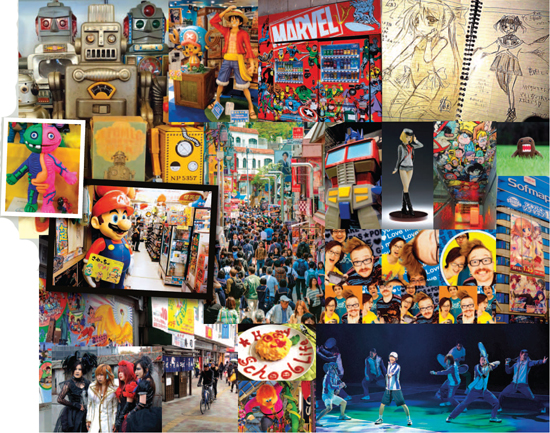
ACKNOWLEDGMENTS
Although this book is mainly the result of my personal research, and I am the sole responsible for any mistakes, I have been lucky enough to be helped, advised and inspired by several amazing people to whom goes all my gratitude.
I really enjoyed working with editors Cathy Layne and June Chong. Cathy believed in this project from the beginning and patiently schooled me in the fine art of book writing, while June took care of the book in the last stages.
My guru Patrick W. Galbraith is the person to blame for giving me my first tour of Akihabara. Also, the sidebar on maid cafes is partly based on his essay Maid in Japan: An Ethnographic Account of Alternative Intimacy (in Intersections: Gender and Sexuality in Asia and the Pacific, Issue 25, February 2011).
I found a lot of useful information about Tokyos turbulent relationship with Godzilla in Armand Vaquers The Monster Movie Fans Guide to Japan , a detailed guide to kaiju movie locations.
While I spent my fair share of time and money in countless game centers, Brian Ashcrafts informative and entertaining Arcade Mania! gave me a needed historical perspective on the video game industry.
Rebecca Koga aka Celestialshadow was an endless source of information on cosplay. Learn more about her and her costume-making activity at phantomlegacycostumes.com.
Mayuko Okuno helped me unveil the secrets of Ikebukuros Otome Road.
Honorable mention to editors Claude Leblanc (Zoom Japon magazine) who sadistically kept giving me story assignments while I was busy working on this guide, thus helping me pay the bills.
I also want to thank all the people (too many to mention one by one) who shared their thoughts and opinions, and kindly let me use their photos. In particular Frances Delgado of How a Girl Figures fame (www.howagirlfigures.com) whose old otaku rooms is featured in the book.
Last but not least, I want to thank my folks for letting me watch the Grendizer TV series at dinner time one fateful April 1978; and my lovely wife Hisako for her encouragement, endless patience, and her invaluable contribution to the research for this book.
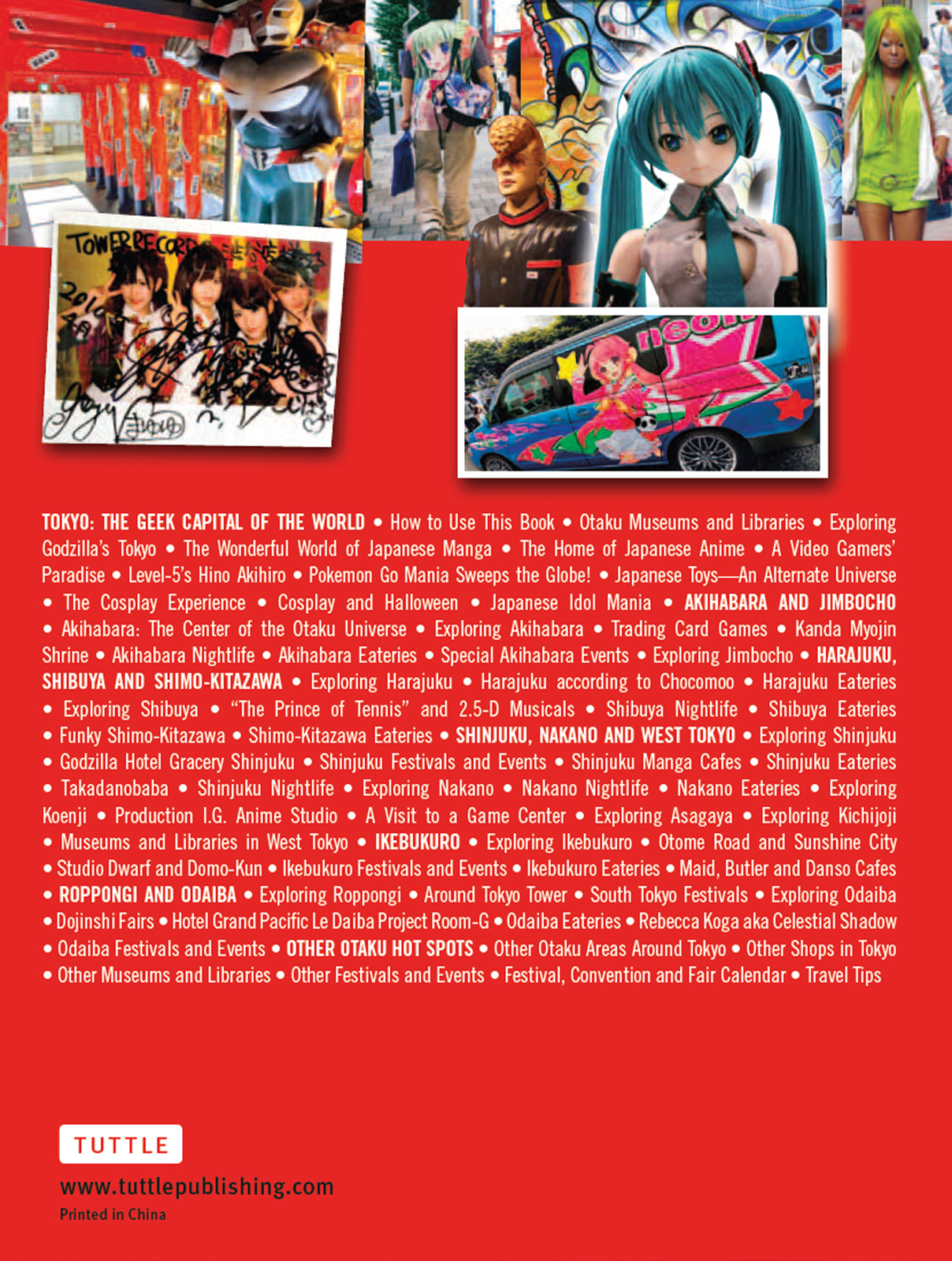
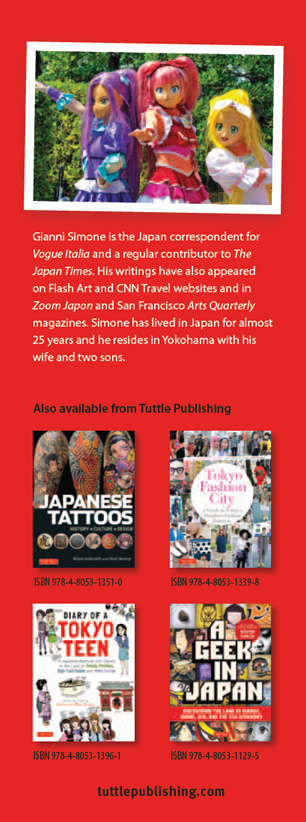
TOKYO : THE GEEK CAPITAL OF THE WORLD
MORE THAN 30 YEARS HAVE PASSED SINCE THE WORD OTAKU BEGAN TO BE ASSOCIATED WITH ANIME AND MANGA. MANY THINGS HAVE CHANGED, STARTING WITH PEOPLES ATTITUDES TOWARD THE WORD AND ITS IMPLICATIONS. BACK IN 1983, ESSAYIST NAKAMORI AKIO USED IT IN A DISPARAGING WAY WHEN WRITING ABOUT ANIME AND MANGA FANS. BEFORE THAT, THE WORD MANIA HAD BEEN USED TO DEFINE SOMEONE WHO WAS MADLY IN LOVE WITH AND DEEPLY KNOWLEDGEABLE ABOUT SOMETHING, BE IT COMICS, TRAINS OR WEAPONS. BUT AFTER NAKAMORIS COLUMN APPEARED IN MANGA BURIKKO MAGAZINE, ALL THOSE SOCIALLY INEPT YOUNG MALES WHO WERE GUILTY OF SEEKING REFUGE IN A FANTASY WORLD MADE OF VIDEO GAMES, TOYS AND CUTE GIRLS WERE BRANDED WITH THE OTAKU LABEL.
Of course that was a very reductive description, and recent books, articles and essays have showed what many people probably already knew: That you dont have to be a nerdy loser to be an otaku; and that the geeky guy label is actually quite misleading, for there are as many female otaku out there as there are men.
But peoples attitudes are hard to change, and more than 20 years passed before otaku culture began to be slowly accepted, mainly thanks to the Densha Otoko (Train Man, 2004) phenomenon. This allegedly true story of a 20-something geek who falls in love with a girl was born on the 2channel message board, and from there spread like wildfire, eventually becoming a novel, a movie and a TV series, all of them extremely successful, and showing in the process that these otaku were not so dangerous after all, and some were actually quite cute.
While even today many Japanese have mixed feelings about this subject, foreign fans have never had any problems with the concept and have wholeheartedly used the term to describe themselves. In Europe, Japanese animation first appeared on French and Italian television in the second half of the 70s and much of the under-40 generation in those countries has been raised on a steady anime diet. In the United States, already ten years before Densha Otoko , many American fans who attended early anime conventions like Otakon used to proudly display the O-word on their T-shirts. And even in Chinawhere Astro Boy first aired on TV in the 80sthe so-called One-Child Generation born at the end of last century has found ways to circumvent governments bans and restrictions on Japanese pop culture by pirating copies of popular anime and organizing their own dojin fairs.
Nowadays, of course, the words manga and anime can be found in most dictionaries, otaku culture is celebrated in countless conventions around the world, and Japanese comics and animation are widely available in many languagesnot only the giant robots sagas that first became popular in the West but even shojo manga and boys love stories. Online communities have popped up everywhere, and in many countries we now even have dojinshi fairs and cosplay events. Some people go so far as to learn the Japanese language in order to enjoy manga and anime in their original versions.

JAPANESE OTAKU ARE NOT AFRAID OF SHOWING OFF THEIR PREDILECTIONS ANYMORE.

POSH DEPARTMENT STORE WINDOWS.

MANGA AND ANIME CHARACTERS CAN BE FOUND EVERYWHERE, FROM KIDS SOCKS TO POSH DEPARTMENT STORE WINDOWS.
Even highbrow culture has fully embraced the otaku world. Internationally renowned artist Murakami Takashi has cleverly exploited mangas popular appeal; the well-respected Venice Biennale has featured an otaku-themed exhibition (the 2004 Japanese pavilion was called Otaku: Persona = Space = City); and even the otaku concept of moe is now discussed by cultural critics and sociologists with the same gravity once only granted to wabi sabi and other exotic ideas from Japan.
Next page
